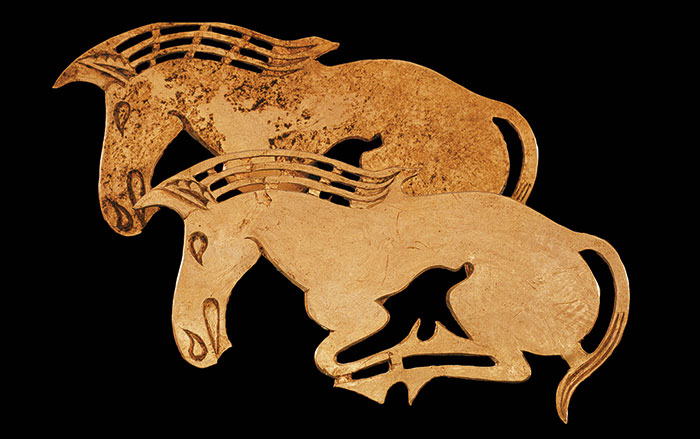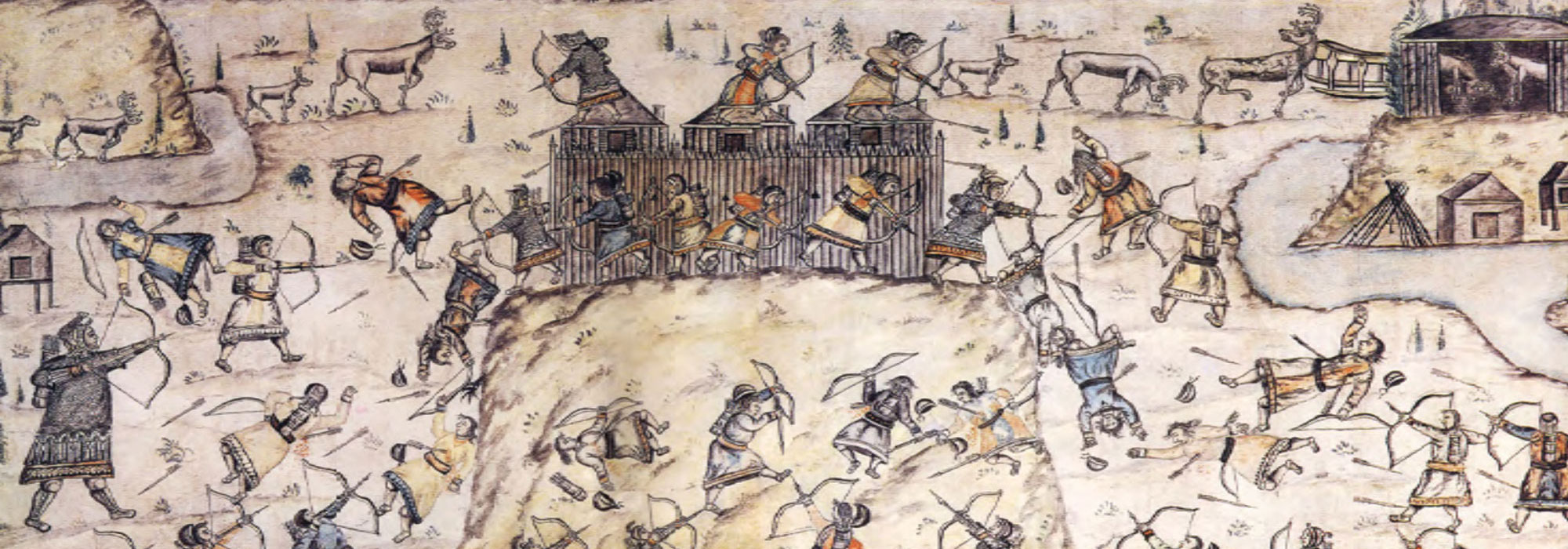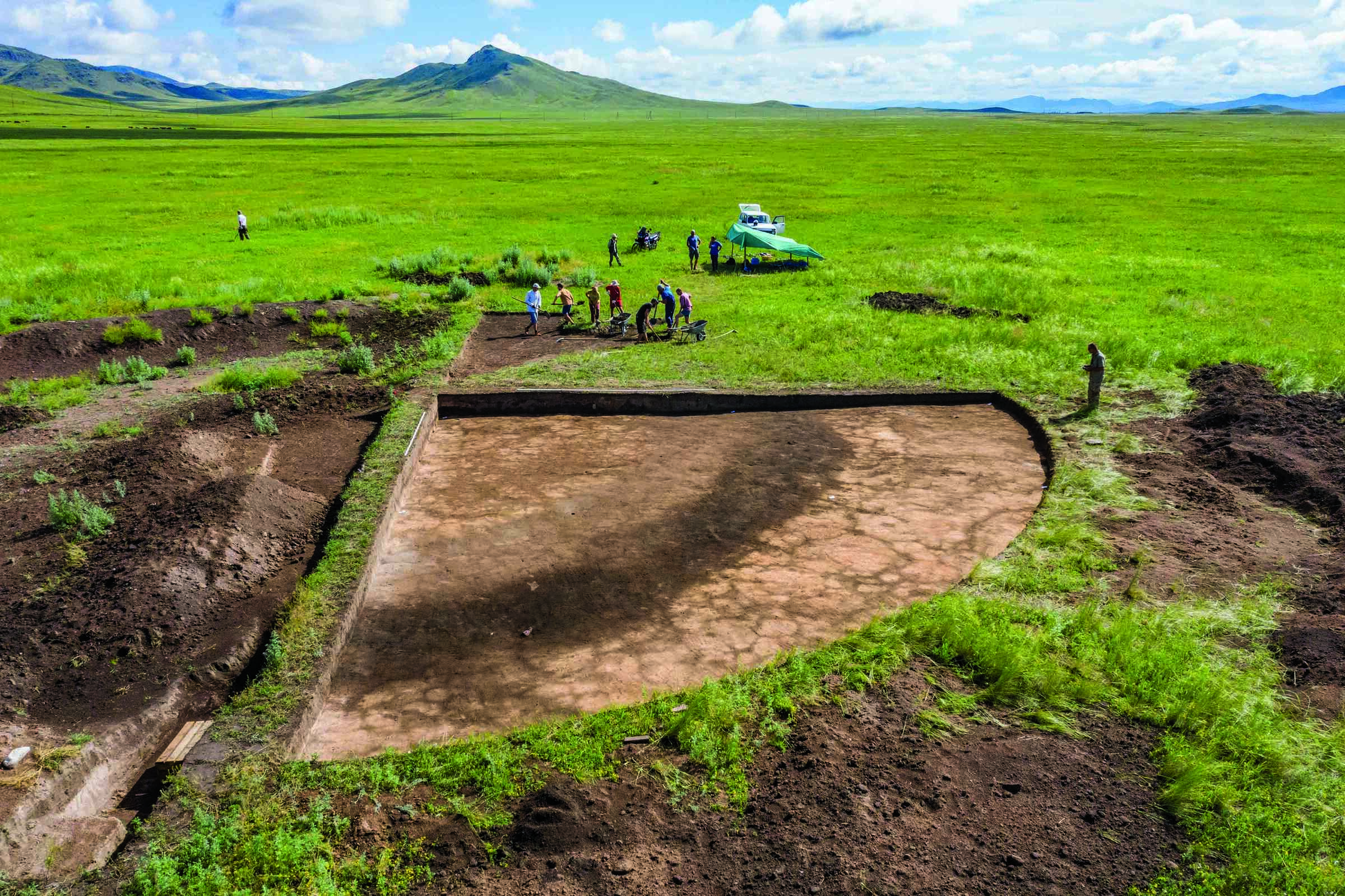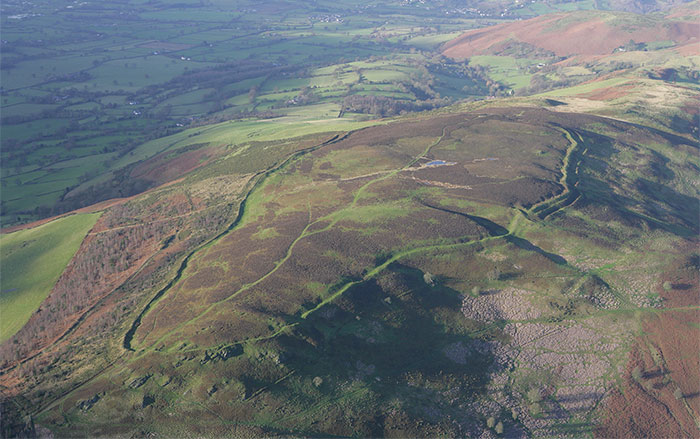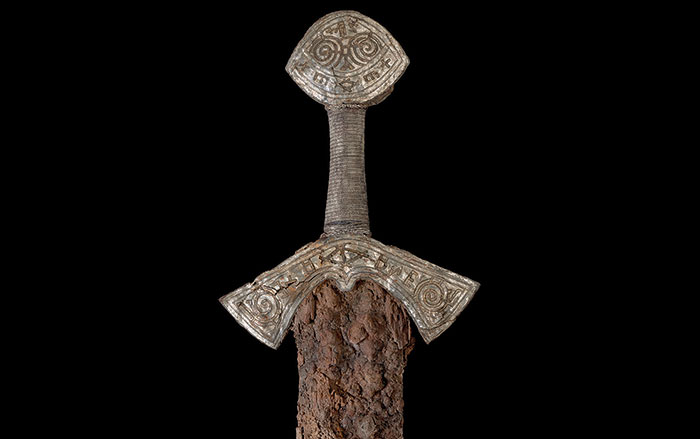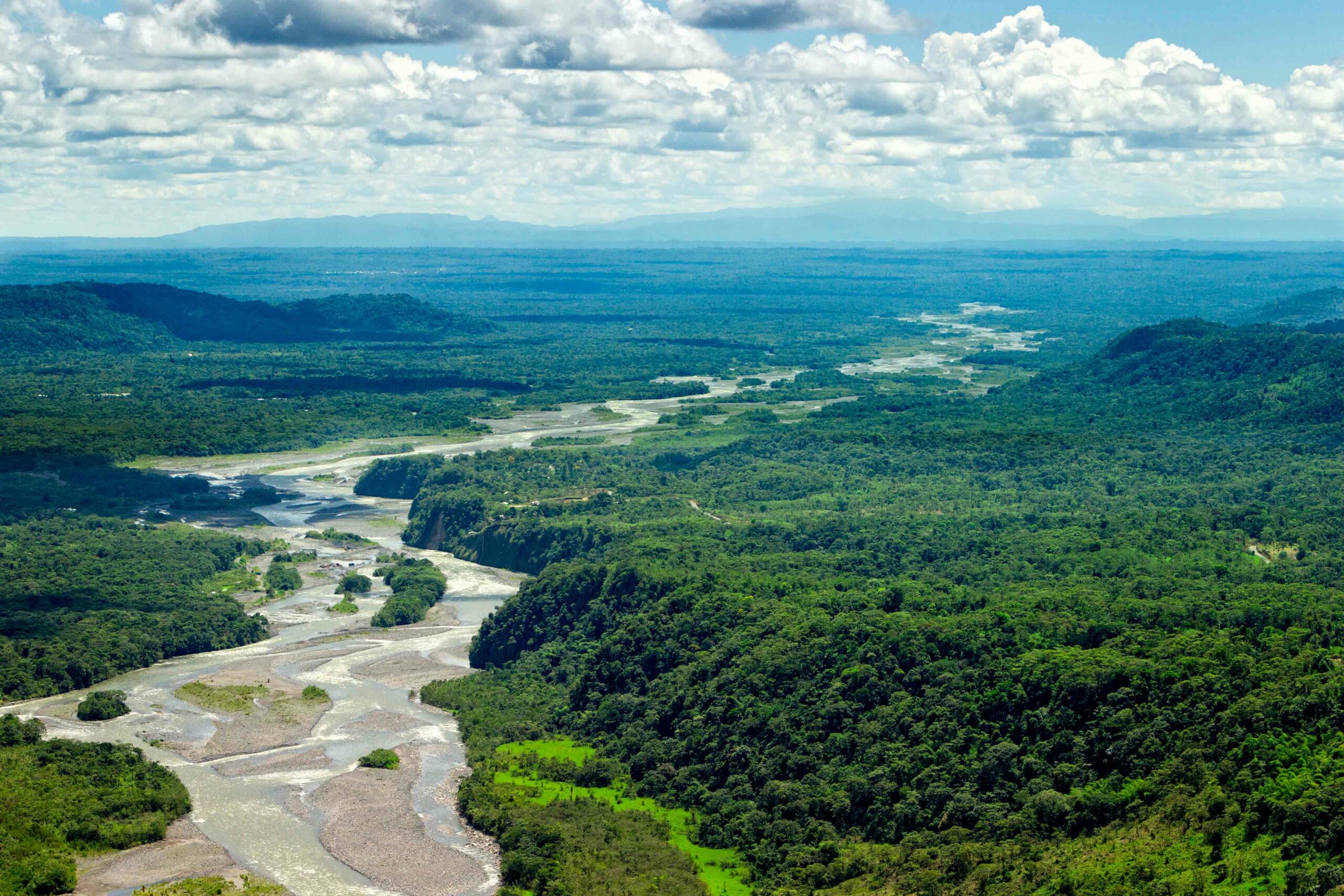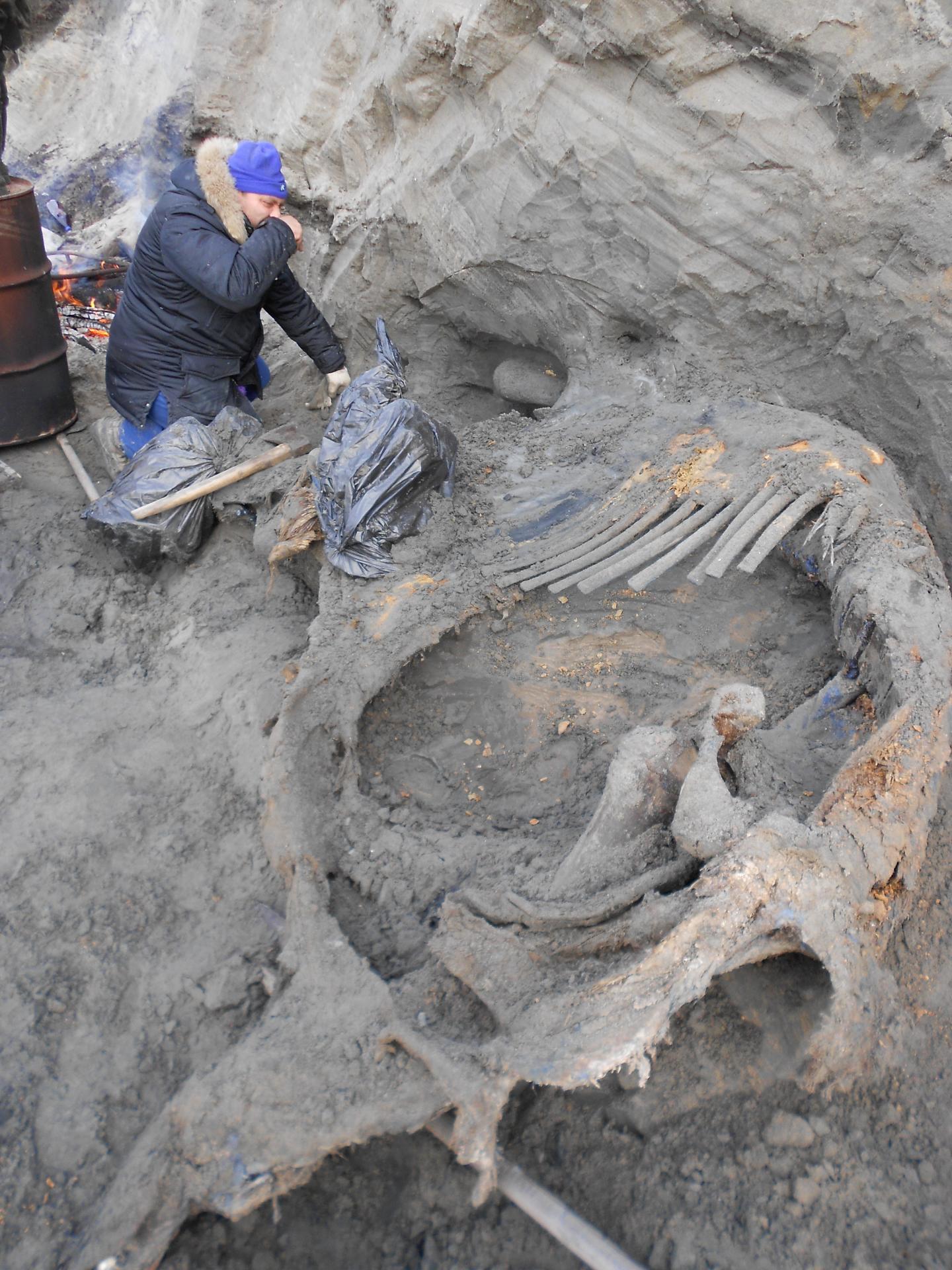
ST. PETERSBURG, RUSSIA—The partial frozen carcass of a mammoth was discovered near the eastern shore of Yenisei Bay in the central Siberian Arctic in 2012 by an 11-year-old boy. Scientists, led by Alexei Tikhonov of the Russian Academy of Sciences, excavated the mammoth remains, and found injuries made by sharp weapon tips to the ribs and right mandible, and signs of chopping to the outside of the right tusk. “This is a rare case for unequivocal evidence for clear human involvement,” Vladimir Pitulko of the Russian Academy of Science told Science. Radiocarbon dating of collagen from the tibia, bone, hair, and muscle tissue indicate that the animal died some 45,000 years ago, or 10,000 years earlier than it had been thought modern humans lived in the Eurasian Arctic. The find also indicates that people had made the necessary adaptations in cooperation, hunting, tool making, shelter building, and clothing production in order to live in such a harsh environment. To read about mammoth remains discovered on a Michigan farm, go to "Leftover Mammoth."



